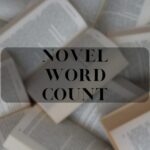Crafting a novel is much like piecing together a puzzle, with each chapter serving as an essential piece that drives the narrative forward. One of the dilemmas many authors face is determining the ideal length for these chapters.
While it might seem like a straightforward concern, the chapter length can profoundly shape a reader’s experience and the story’s overall flow.
This insight will shed light on the factors influencing chapter length and guide authors toward making informed decisions for their novels.
Factors Influencing Chapter Length

The length of a chapter isn’t random. It’s molded by several elements, each contributing to the rhythm and pacing of a story.
Here are some key considerations to bear in mind.
Genre and Target Audience
| Genre | Description |
|---|---|
| Young Adult Fiction | Shorter, snappier chapters often suit the pacing and attention spans of younger readers |
| Fantasy | Readers might expect more detailed and lengthier chapters to fully immerse themselves in complex worlds |
| Thrillers | Short, intense chapters can increase tension and propel the narrative forward |
With genre, one must also consider the target audience. A middle-grade audience might appreciate faster-paced, shorter chapters, while a seasoned fantasy reader might enjoy diving deep into intricate details.
Purpose of the Chapter
- Introduce a New Character or Setting: This might necessitate more detail, leading to a longer segment.
- Action Scenes: Often benefit from shorter, more immediate chapters to maintain momentum.
- Reflection and Internal Monologue: These can vary, depending on the depth of introspection required.
Understanding the primary goal of your chapter can guide its length. If it serves multiple purposes, consider breaking it into two or more segments.
The Impact on Readers

Your chapters should not only serve the narrative but also respect the reader’s experience. This involves striking a balance between providing enough content and not overwhelming the audience.
Pacing and Momentum
Short, frequent chapters can make a story feel fast-paced, pushing readers to turn pages. This technique works wonders in suspense-filled narratives. On the contrary, longer chapters can slow down the pace, allowing for deeper immersion and reflection.
Engagement and Satisfaction
- Sense of Achievement: Short chapters give readers a feeling of progress, encouraging them to continue.
- Depth and Detail: Long chapters allow readers to dive deep, fostering attachment to characters and settings.
Ultimately, it’s about reading experience. It’s crucial to consider how readers will feel at the end of a chapter. Will they be eager to start the next, or need a moment to reflect?
Finding Your Unique Balance
There’s no definitive answer to the perfect chapter length. Instead, it’s a delicate balance of various factors, shaped by the story’s needs and the desired reader experience. As you write, consider the following:
Test and Feedback
It’s invaluable to seek feedback from beta readers or writing groups. They can provide insight into whether a chapter feels too long, too short, or just right. Sometimes, an outside perspective is all you need to identify the best structure for your story.
Trust Your Instincts
As a writer, you have a unique voice and perspective. Sometimes, it’s best to trust your instincts and gut feeling. If a chapter feels right to you, there’s a good chance it’ll resonate with readers too.
Evolution of Chapter Length Through Drafts

As your story undergoes revision, so too might the length and structure of your chapters. Here’s a look into the transformative process.
- First Draft
- In initial drafts, it’s common to lay out everything without stringent limitations. Chapters might be uneven or even meandering.
- Use the first draft as a playground.
- Try out different lengths to see what feels right.
- Narrative Development
- As the story unfolds, you might find natural breaks or spots where two short chapters could combine for greater impact.
By the end of the first draft, you’ll have a better sense of your story’s flow and where chapter breaks naturally fit. Upon revising, you’ll likely see areas where tightening or expansion is needed. This is where the true crafting of chapter length happens.
- Trimming the Fat: Some chapters may have unnecessary details that can be edited out, making them more concise.
- Expanding on Key Moments: Other sections might benefit from added depth or detail, potentially lengthening them.
With each draft, you’ll move closer to the ideal structure and pacing for your narrative.
The Emotional Arc of a Chapter

Beyond structural concerns, there’s an emotional rhythm to consider. Each chapter should have its emotional peaks and valleys, guiding readers through a miniature journey.
Beginning with Intent
The start of a chapter sets the tone. Whether it’s an action-packed opening or a quiet introspective moment, ensure it aligns with the chapter’s overall emotional trajectory.
- Engaging Openings: Capture the reader’s attention right from the first sentence, setting the stage for what’s to come.
- Setting Expectations: The opening also provides a hint of the emotional journey the reader is about to undertake.
Concluding with Purpose
A chapter’s end can be as vital as its beginning. Whether you opt for cliffhangers, resolutions, or moments of reflection, the conclusion should leave readers with a distinct emotion or urge to continue.
| Element | Description |
|---|---|
| Cliffhangers | These can drive readers to turn the page, eager to discover what happens next |
| Resolution | Providing answers or conclusions can give readers a satisfying pause, a moment to absorb before moving on |
E-readers and Bite-sized Consumables

The rise of e-readers and digital reading apps has shifted the landscape. People often grab moments to read during commutes, waiting times, or short breaks, making shorter, impactful chapters appealing.
Digital Milestones
- Progress Indicators: Digital platforms often display progress percentages or time estimates. Shorter chapters can offer readers frequent milestones, enhancing their sense of accomplishment.
- Bookmarking: While digital platforms allow for easy bookmarking, naturally ending a reading session at the conclusion of a chapter feels more satisfying.
Adaptability and Format
The beauty of digital reading is its adaptability. Font sizes, backgrounds, and other visual elements can be adjusted, potentially altering perceived chapter length.
- Variable Text Sizes: What might seem like a long chapter in print could feel shorter on an e-reader, depending on text size.
- Flow and Navigation: Swiping or tapping to turn pages can influence pacing, with shorter chapters enhancing the feeling of rapid progression.
Audiobooks and Listening Rhythms

Audiobooks have surged in popularity, presenting a different dynamic when considering chapter lengths. The listening experience can influence how we perceive pacing and breaks. Many people listen to audiobooks during specific activities, like driving or exercising.
Consider the average duration of these sessions when thinking about chapter length. Listening, for some, might be a slower absorption method compared to reading. Too long chapters could risk losing the listener’s attention.
Pauses and Reflection
Just as with reading, ending a listening session naturally at the conclusion of a chapter can be gratifying.
- Natural Pauses: Longer chapters might require mid-chapter breaks in audiobook format, allowing listeners to pause and reflect.
- Recap and Memory: Given the passive nature of listening, shorter chapters can help in recapping events, ensuring listeners retain key story details.
The Ubiquity of Multi-tasking
In a multitasking world, readers and listeners often juggle multiple activities. Tailoring chapter lengths to these fragmented consumption patterns can enhance engagement and retention. In our always-connected era, interruptions are frequent.
Shorter chapters can cater to readers who might be reading in between tasks or during short breaks.
- Start and Stop: It’s easier to pick up from where one left off with concise chapters, reducing the need to backtrack.
- Mental Bookmarking: Shorter segments can be easier to recall, especially if a reader gets distracted and needs to return later.
FAQs
Can I have chapters of varying lengths in my novel?
Yes, many authors use chapters of different lengths to serve different purposes. For instance, an intense action scene might be short and brisk, while a chapter diving into a character’s backstory might be longer.
Do genres dictate chapter length?
While there isn’t a strict rule, certain genres tend to have common chapter lengths. For example, thrillers might have shorter, more intense chapters, while epic fantasies may feature longer, more detailed chapters.
How can I decide the best chapter length for my story?
Consider factors like your story’s pacing, the emotional arc you want to convey, and feedback from beta readers or writing groups. Trusting your instincts as a writer is also crucial.
Does chapter length affect reader engagement?
It can. Short chapters might provide readers with a sense of accomplishment, pushing them to read further. In contrast, longer chapters can immerse readers more deeply into the narrative.
Is it okay to have really short chapters, even a page or less?
Certainly! Some stories use brief chapters to create impact, highlight a particular moment, or introduce a sudden twist. The key is to ensure that the length serves a purpose and isn’t short just for the sake of it.
Summary
Determining the optimal chapter length is an art, blending both the author’s intentions and the reader’s experience. It’s not about fitting into a predefined mold but about sculpting chapters that resonate with the story’s essence and the intended audience.
As you continue writing, keep in mind that the narrative’s heartbeat lies in its chapters. Remember, its only up to the artist to determine how long chapter in their books will be.
There is zero doubt about that.







